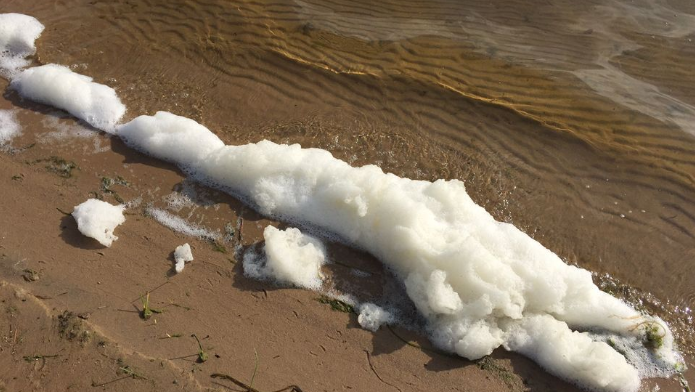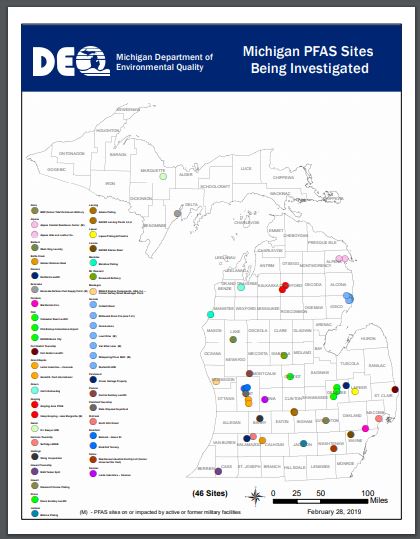PFAS: How Much is Too Much?
Michigan is actively addressing PFAS, but need more information about its health effects.

State health officials say more study is needed to determine how certain chemicals affect humans.
Per- and polyfluoroalkyl substances–or PFAS–have been around for decades. Chances are, you have something in your home that contains PFAS. Think non-stick cookware, water-repellent clothing, and stain-resistant fabrics. Firefighting foam is another common source of PFAS, which can end up in groundwater and wells around manufacturing facilities and military bases. Even though they’ve been around since the 1950s, they are considered an emerging public health threat.

According to the Michigan PFAS Action Response Team, 98 percent of all Americans have some level of these chemicals in their blood. And while they have been linked to higher risks of certain cancers and thyroid disease, health experts say they don’t know enough about them to say PFAS are directly responsible for specific illnesses. There’s also disagreement on the level of exposure that could cause health problems. The U.S. Environmental Protection Agency has established a lifetime health advisory for two specific compounds: perfluorooctanoic acid (PFOA) and perfluorooctane sulfonic acid (PFOS). The EPA’s limit is 70 parts per trillion, or roughly one drop of water in 20 Olympic-sized swimming pools. Some experts say that’s too lenient and are calling for a lower standard around 10 parts per trillion.
Nick Schroeck is an assistant professor and director of clinical programs at the University of Detroit Mercy School of Law. He says 70 parts per trillion is too lax.
“Across the board, health experts have said that is far too high. We need much more stringent levels of protection.”–Nick Schroeck
In 2018, the Michigan Department of Environmental Quality tested almost 1,600 water sources, including municipal water systems, schools that operate their own wells, and tribal water systems. It was the first such test of its kind in the nation. It found that:
- 90 percent of the systems tested showed no sign of PFAS.
- 7 percent had less than 10 parts per trillion.
- 3 percent had 10-to-70 parts per trillion.
- 2 systems–the city of Parchment and Robinson Elementary School near Grand Haven–exceeded the 70 parts per trillion limit.
Parchment took action by connecting to Kalamazoo’s water system in 2018. The Robinson school provided students with bottled water and plans to install a special filtration system.
While most of Michigan’s public water systems did not contain PFAS, state and local officials are taking the potential threat seriously. Gov. Gretchen Whitmer has asked state lawmakers for an additional $120 million dollars to improve water quality and infrastructure. Her request includes $30 million for PFAS research, treatment, and remediation.
Click on the audio player to hear the conversation with WDET’s Pat Batcheller.
PFAS in Drinking Water by WDET 101.9 FM on Scribd
